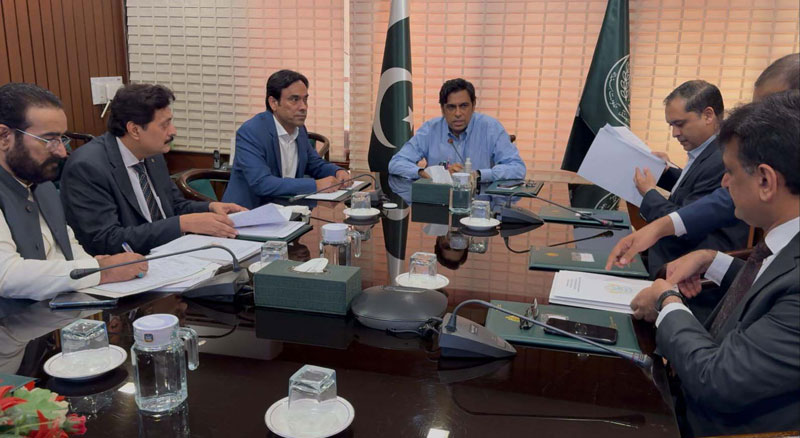On May 22, Chief Secretary of Sindh, Asif Hyder Shah, highlighted that the vision of Pakistan People’s Party chairman Bilawal Bhutto Zardari and Chief Minister Sindh Syed Murad Ali Shah revolves around fostering the potential of young people in the region via technical education and skills enhancement. Shah mentioned during a crucial STEVTA conference in Karachi on Wednesday that the provincial administration is dedicated to generating chances for youths by fortifying the framework for technical and vocational training so as to comply with both local and global employment criteria. During his address at this gathering aimed at synchronizing educational programs with industrial requirements to boost youth employability, he conveyed these sentiments.
The gathering included Chairman STEVTA, along with Special Assistant to the Chief Minister for Sindh, Mr. Junaid Buland; Director-General of Public-Private Partnerships, Mr. Asad Zamin; Managing Director of STEVTA, Mr. Tariq Manzoor Chandio; and several high-ranking officials from the organization. The Chief Secretary mandated achieving a full 100% job placement rate for all STEVTA-trained graduates as an essential target*, highlighting that enhancing employability should remain at the core of each training program. Emphasizing this point, he underscored the necessity of developing skills-oriented courses aligned with contemporary industrial needs, ensuring they pave clear pathways towards employment. Furthermore, he called upon STEVTA to promptly forge connections with businesses functioning within today’s evolving economic landscape and develop educational offerings tailored to meet present labor market requirements. This would ensure learners acquire technical proficiency and secure gainful employment.
The meeting learned that STEVTA presently manages over 250 technical and vocational centers throughout Sindh, with these numbers broken down into specific divisions: 56 in Karachi Division, 65 in Hyderabad, 31 in Sukkur, 46 in Larkana, 18 in Mirpurkhas, and 43 in Shaheed Benazirabad Division. The curriculum at these facilities covers areas such as mechanics, electricity, construction, computers, textiles, hospitality, and various trades.
To enhance STEVTA’s effectiveness and responsiveness, the Chief Secretary disclosed plans for 30% of their institutions to operate via the Public-Private Partnership (PPP) framework. This strategy seeks to boost administration efficiency, elevate educational standards, and increase job placement rates by engaging actively with the business community.
He stressed that for public entities to operate effectively, cooperation with the private sector is crucial. Public-Private Partnerships (PPPs) can enhance both the quality of education and facilities, while fostering greater accountability and outcomes-focused performance. He mandated that explicit Key Performance Indicators (KPIs), particularly focusing on employment placements after graduation, should be incorporated into every PPP agreement. Additionally, he pledged comprehensive backing from the Sindh government, including funding and skilled staff, to facilitate these changes.
The gathering concluded with plans to establish 30 exemplary institutions spread throughout all six districts of Sindh—five per district. Each chosen institute would undergo upgrades featuring contemporary infrastructures, curricula aligned with industrial standards, well-trained educators, and internationally acknowledged certification programs, transforming them into premier learning hubs.
Chairman STEVTA and Special Assistant to the Chief Minister, Mr. Junaid Buland, told the gathering about forthcoming market-oriented programs like Artificial Intelligence, Information Technology, and other cutting-edge fields at STEVTA institutions. They emphasized that setting up 30 model centers aims to provide young people in Sindh with internationally competitive abilities, preparing them for jobs locally and abroad. During this session, they discussed major issues confronting STEVTA including unfilled faculty roles, aged facilities, outmoded syllabuses, inadequate tools, and insufficient industrial partnerships. Regardless of these obstacles, the provincial administration restated its pledge to revamp vocational training via systematic changes and planned actions.


Leave a Reply